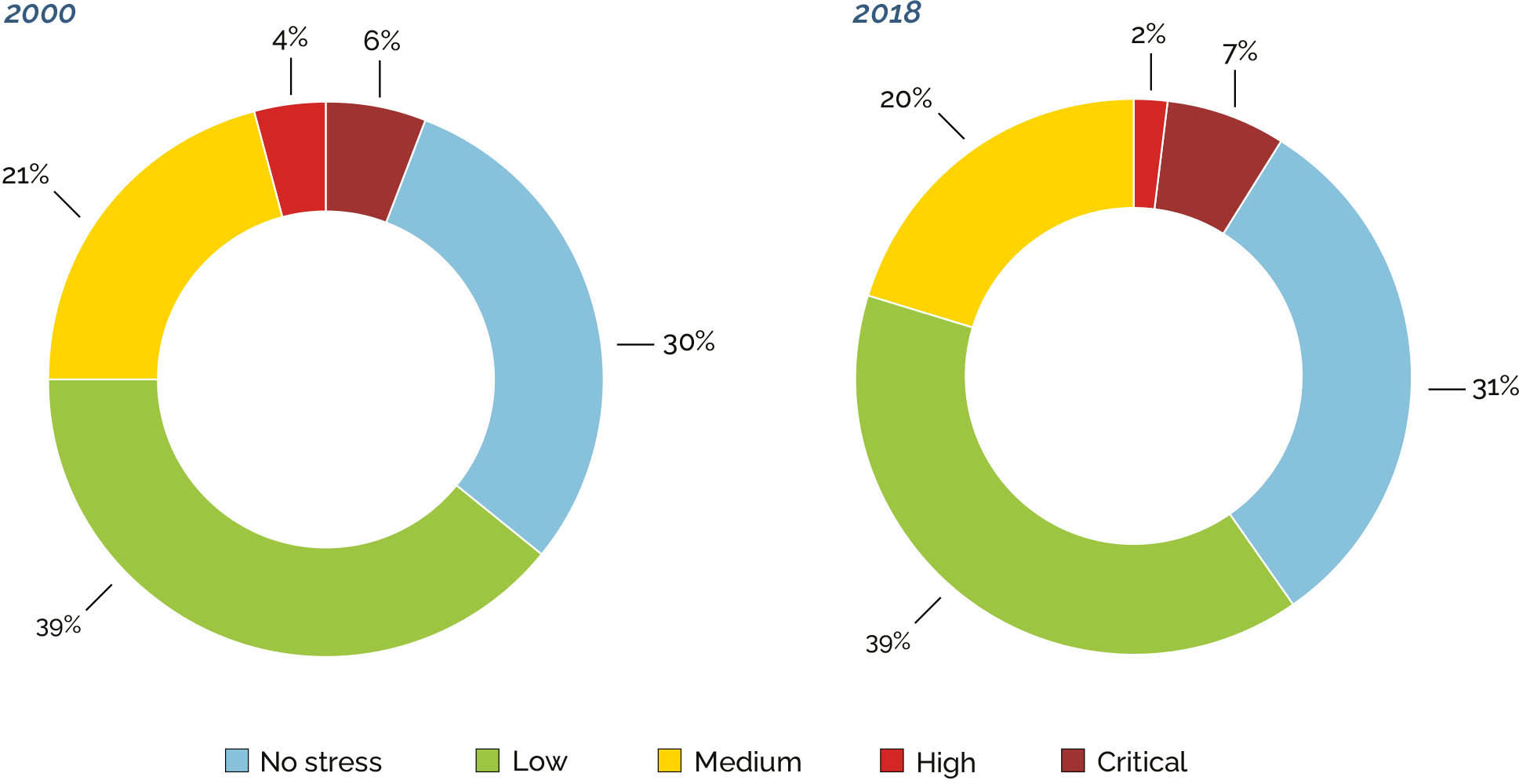2 Socio-economic drivers of demand for land and water
2.2 Diminishing per capita water resources
More than 733 million people live in countries with high (70 percent) and critical (100 percent) water stress, accounting for almost 10 percent of the global population. Between 2018 and 2020, the number of people living in areas under critical water scarcity increased from 6 percent to 7 percent, but in areas of high water scarcity, numbers decreased from 4 percent to 2 percent (Figure S.7). About 1.2 billion people live in areas where severe water shortages and scarcity challenge agriculture and where there is a high drought frequency in rainfed cropland and pastureland areas or high water stress in irrigated areas.

Increasing populations mean reduced natural resources available per capita. In sub-Saharan Africa, water availability per capita declined by 40 percent over the past decade, and agricultural land declined from 0.80 to 0.64 ha/capita between 2000 and 2017. Northern Africa, Southern Africa and Western Africa each have less than 1 700 m3/capita, which is considered to be a level at which a nation’s ability to meet water demand for food and from other sectors is compromised.
In addition, more than 286 rivers basins and about 600 aquifers cross international borders. However, over 60 percent of transboundary river basins and a much higher percentage of shared aquifers still lack any cooperative and adaptive transboundary management mechanisms to cope with resource allocation and water pollution control. Strengthening transboundary water cooperation is essential for reaching the water-related SDG targets and the broader SDGs.

